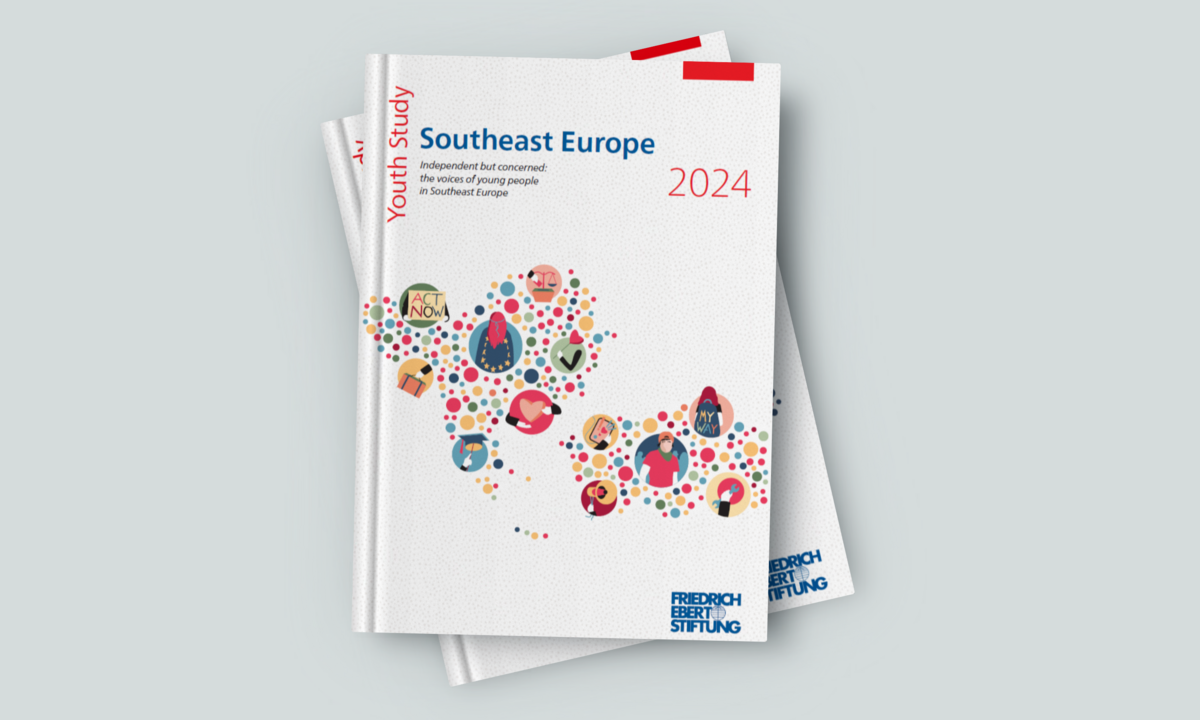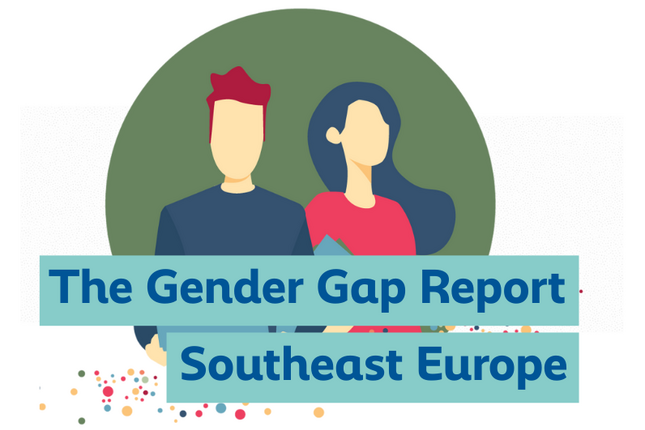
The Gender Gap Report Part 4: Same Online Hate, Different Take: Why Young Men and Women in Montenegro Disagree on Free Speech
When Shared Experience Leads to Different Conclusions
Young men and women in Montenegro navigate the same digital spaces, encounter similar levels of online hostility, yet emerge with different ideas about what should be done about it. The Friedrich-Ebert-Stiftung's 2024 Montenegro Youth Study reveals an interesting finding: while 41.5% of young women and 39.9% of young men report experiencing hate speech—nearly identical rates—they disagree sharply on whether such speech should be regulated.
This fourth installment in our Gender Gap series turns to Montenegro, where unique survey questions about hate speech and free expression reveal how gender shapes not who gets targeted online, but how young people interpret and respond to digital aggression. The findings expose deeper philosophical divides about freedom, protection, and the role of absolute free speech in a democratic society.
The Surprising Truth About Who Faces Hate Speech
Montenegro's data shows that, among the country's youth aged 14-29, men and women report experiencing hate speech at nearly identical rates.
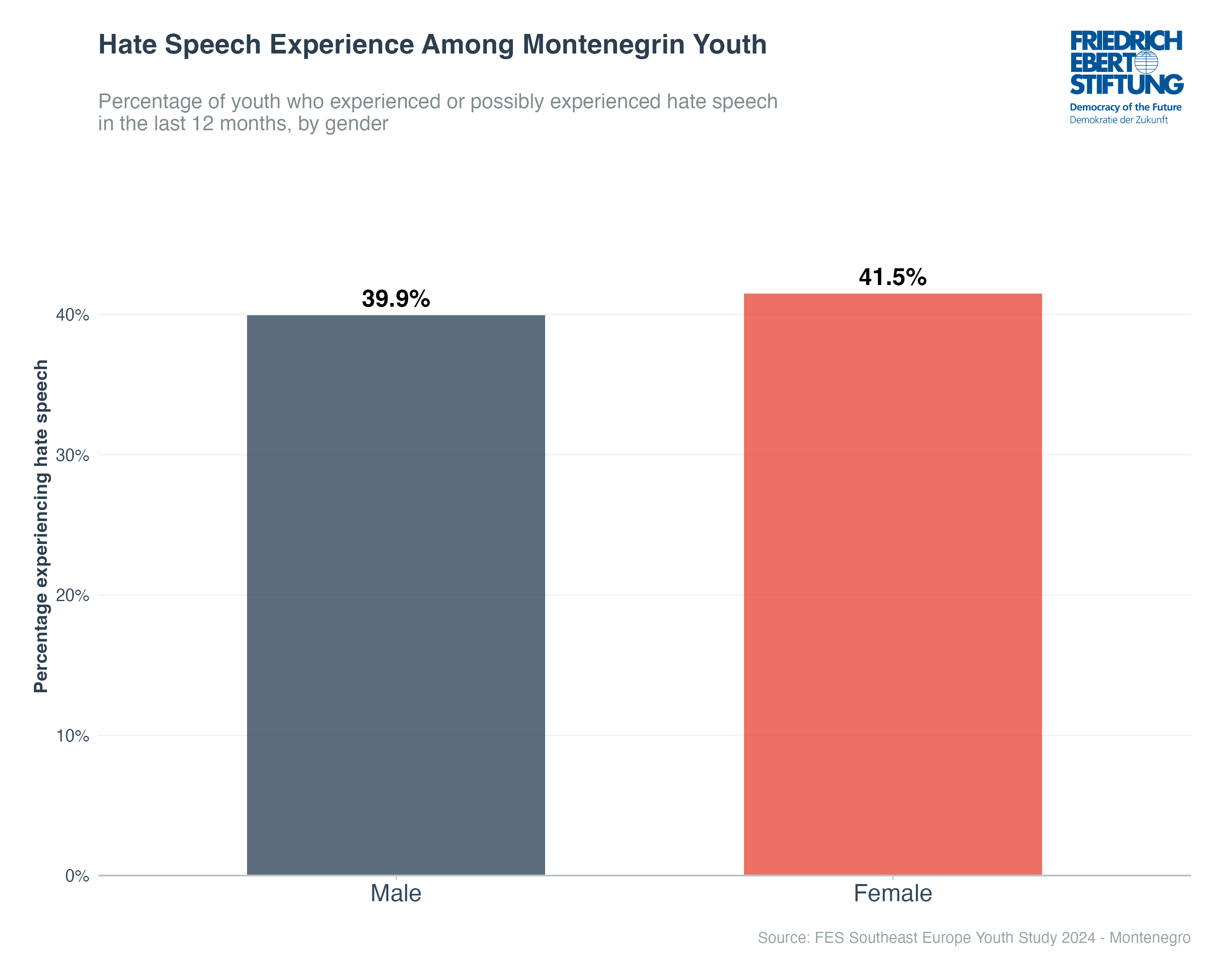
The numbers—39.9% for men and 41.5% for women—are so close that the small difference could easily be due to chance. This finding challenges narratives about gendered victimization online and suggests that in Montenegro's digital landscape, verbal aggression is an equal-opportunity phenomenon.
What makes this finding particularly striking is its consistency. Whether looking at teenagers or twenty-somethings, urban or rural youth, the gender parity in hate speech exposure remains. Young Montenegrins, regardless of gender, face roughly similar risks of encountering hostility in digital spaces.
The Real Divide: What Should Be Done About It?
If men and women face similar levels of hate speech, one might expect them to reach similar conclusions about how to address it. Instead, Montenegro's youth show a clear gender split on one of democracy's fundamental questions: should freedom of expression have limits?
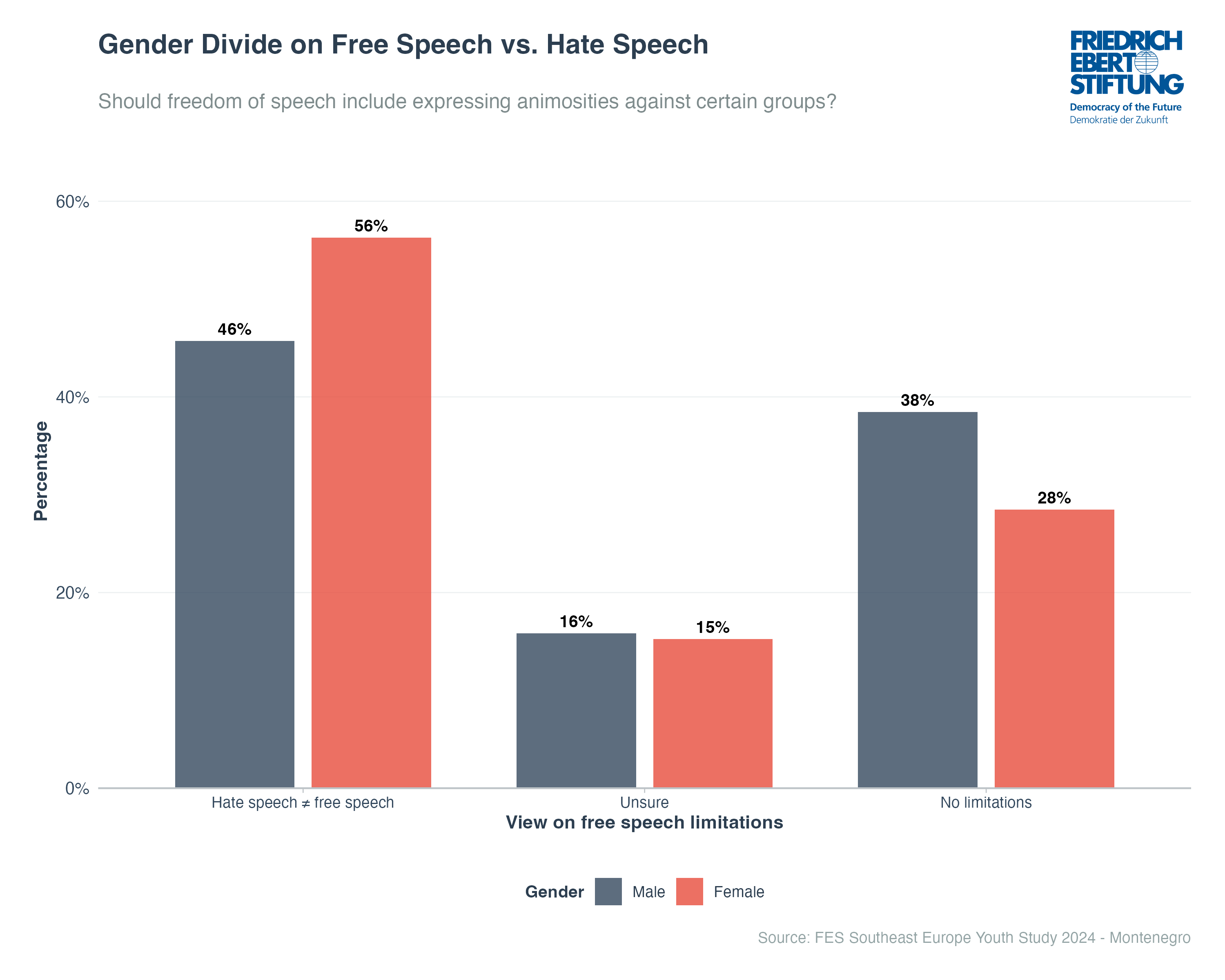
When asked whether freedom of speech should include the right to express animosities against certain groups, 38% of young men say everyone should express anything without limitations, compared to 28% of women—a meaningful 10 percentage point gap. Meanwhile, 56% of women explicitly state that hate speech should not be considered free speech, versus 46% of men.
This hints at different philosophies about the relationship between individual freedom and collective protection. Men's greater defense of unlimited expression, even when they themselves experience hate speech at similar rates, suggests they view verbal aggression as an acceptable price for unfettered discourse. Women's stronger support for boundaries implies a different calculus—one that weighs the harms of hate speech more heavily against the benefits of absolute freedom of expression.
Beyond Speech: A Broader Pattern of Rights Consciousness
The gender divide extends beyond abstract questions about free expression to concrete assessments of who needs more rights in Montenegrin society. Women are consistently more likely to identify rights deficits across multiple groups.
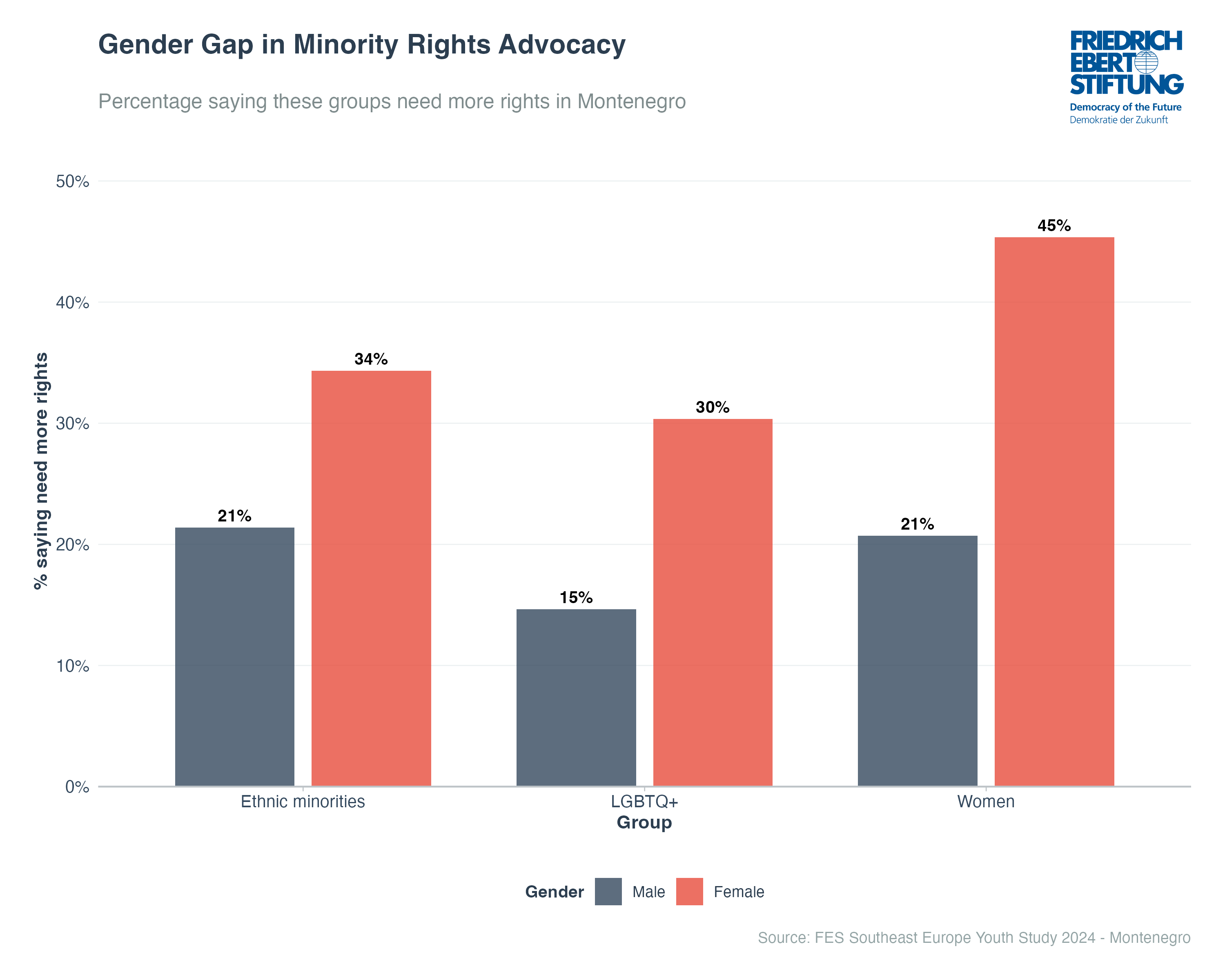
The gaps are substantial: 46% of young women say women need more rights compared to just 23% of men. For LGBTQ+ rights, the split is 29% versus 15%. For ethnic minorities, 34% versus 21%. These are not just differences of degree—they represent meaningful differences in worldview about the current state of equality in Montenegro.
The consistency across different minority groups is telling. This is not about women simply advocating for their own gender's interests. Young women show systematically higher concern for the rights of all marginalized groups, suggesting a more comprehensive awareness of—or sensitivity to—structural inequalities.
Age Amplifies Exposure for Everyone
One of the clearest patterns in the data is how hate speech exposure increases with age. Among 14-18 year olds, about one in four report experiencing hate speech. This doubles to nearly half among 19-24 year olds and remains elevated for those 25-29.
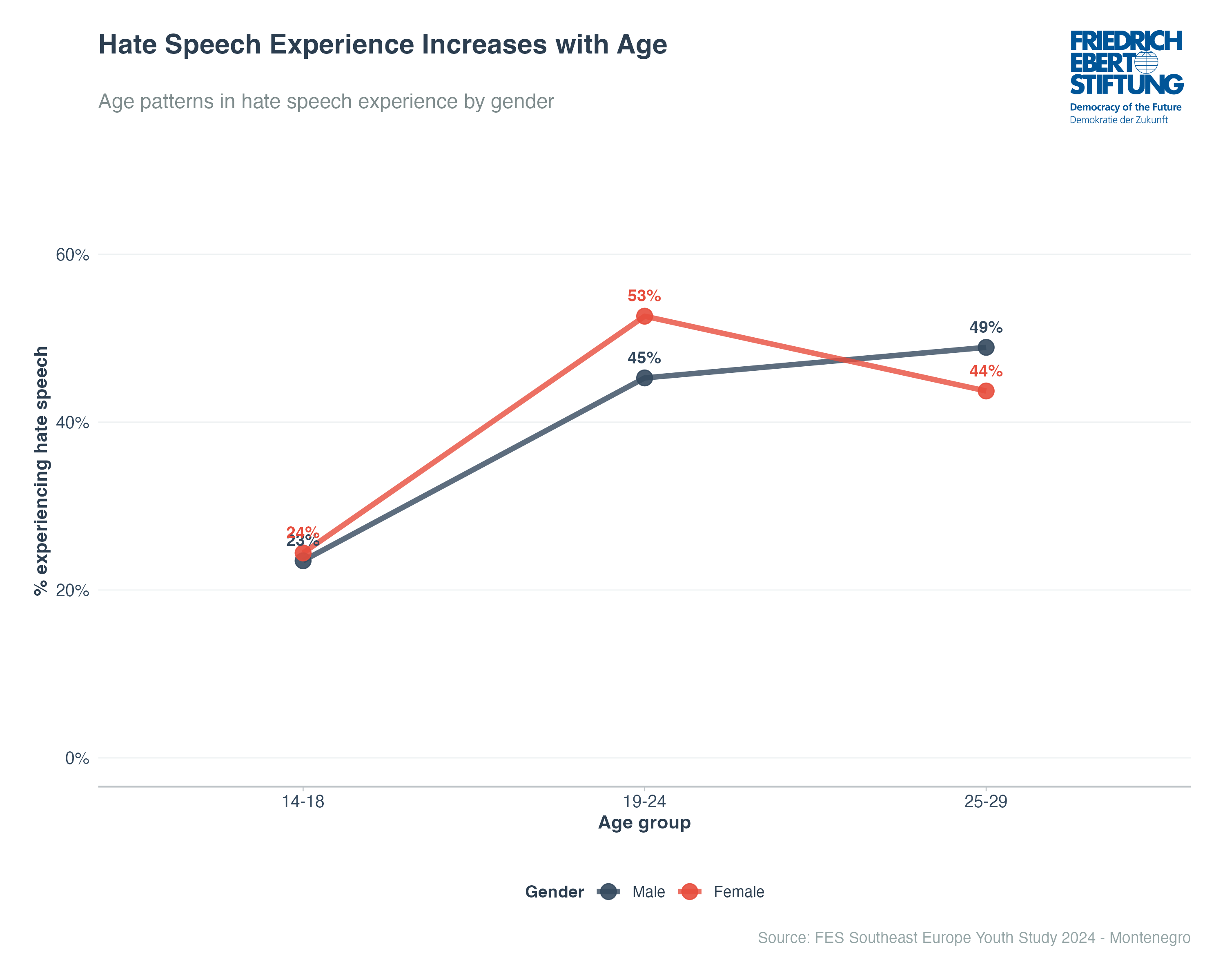
Importantly, this age trajectory affects both genders equally. Young men and women show parallel increases in hate speech exposure as they move from adolescence into young adulthood. The jump likely reflects increased online engagement, more public expression of opinions, and greater participation in political discourse as youth mature.
This pattern has clear implications for intervention timing. The relatively lower exposure rates among younger teens suggest a window for preventive education before youth enter the high-exposure years of late adolescence and early adulthood.
Religious Participation: No Shield Against Disagreement
One might expect religious participation to shape attitudes about speech and morality, potentially reducing gender gaps among the devout. Montenegro's data shows otherwise.
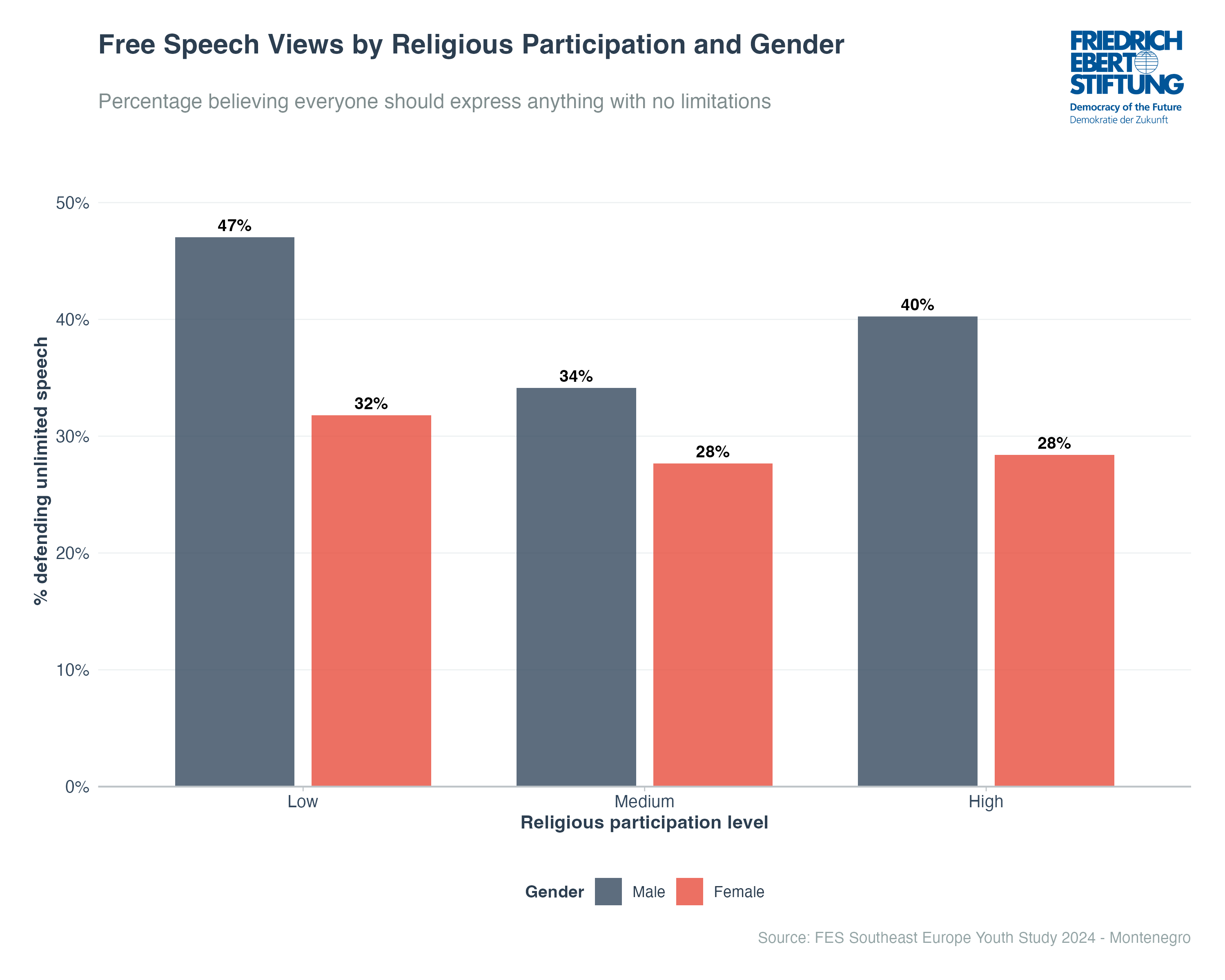
Among the least religious youth, 47% of men defend unlimited speech compared to 32% of women. Among the highly religious, the gap persists: 40% of men versus 28% of women support absolute free expression. Religious participation may influence overall levels of support for unlimited speech, but it does not bridge the gender divide.
This consistency suggests that gender operates independently of religious identity in shaping speech attitudes. Whether secular or devout, young Montenegrin men are more likely than their female peers to prioritize unfettered expression over protection from harmful speech.
Progressive Attitudes Do Not Predict Victimization
A common assumption holds that those with progressive social views face more online harassment. Montenegro's data does not support this narrative. Youth who support same-sex marriage are no more likely to experience hate speech than those who oppose it.
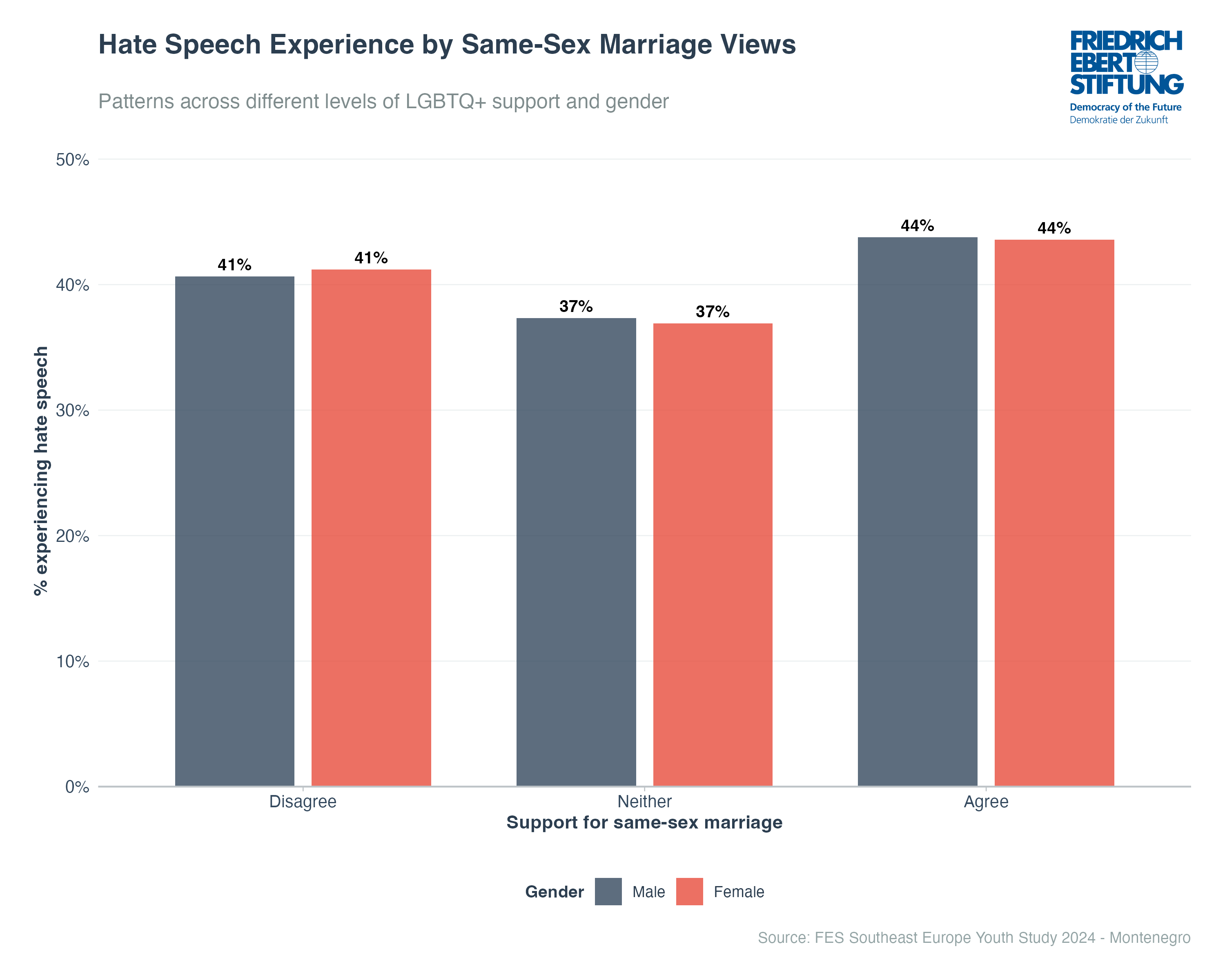
Roughly 40-44% of youth report hate speech experiences regardless of their stance on LGBTQ+ rights. This suggests that hate speech in Montenegro is not primarily about targeting specific ideological positions. Instead, when it does take place, it affects youth regardless of their political and social spectrum.
The lack of connection between progressive attitudes and victimization has important implications. It suggests that hate speech in Montenegro may be driven more by general social tensions, personal conflicts, or random aggression rather than systematic ideological targeting.
Geography Does Not Matter Much
In a small country with widespread internet access, digital experiences increasingly transcend physical geography. Montenegro's data bears this out: urban and rural youth report similar rates of hate speech exposure.
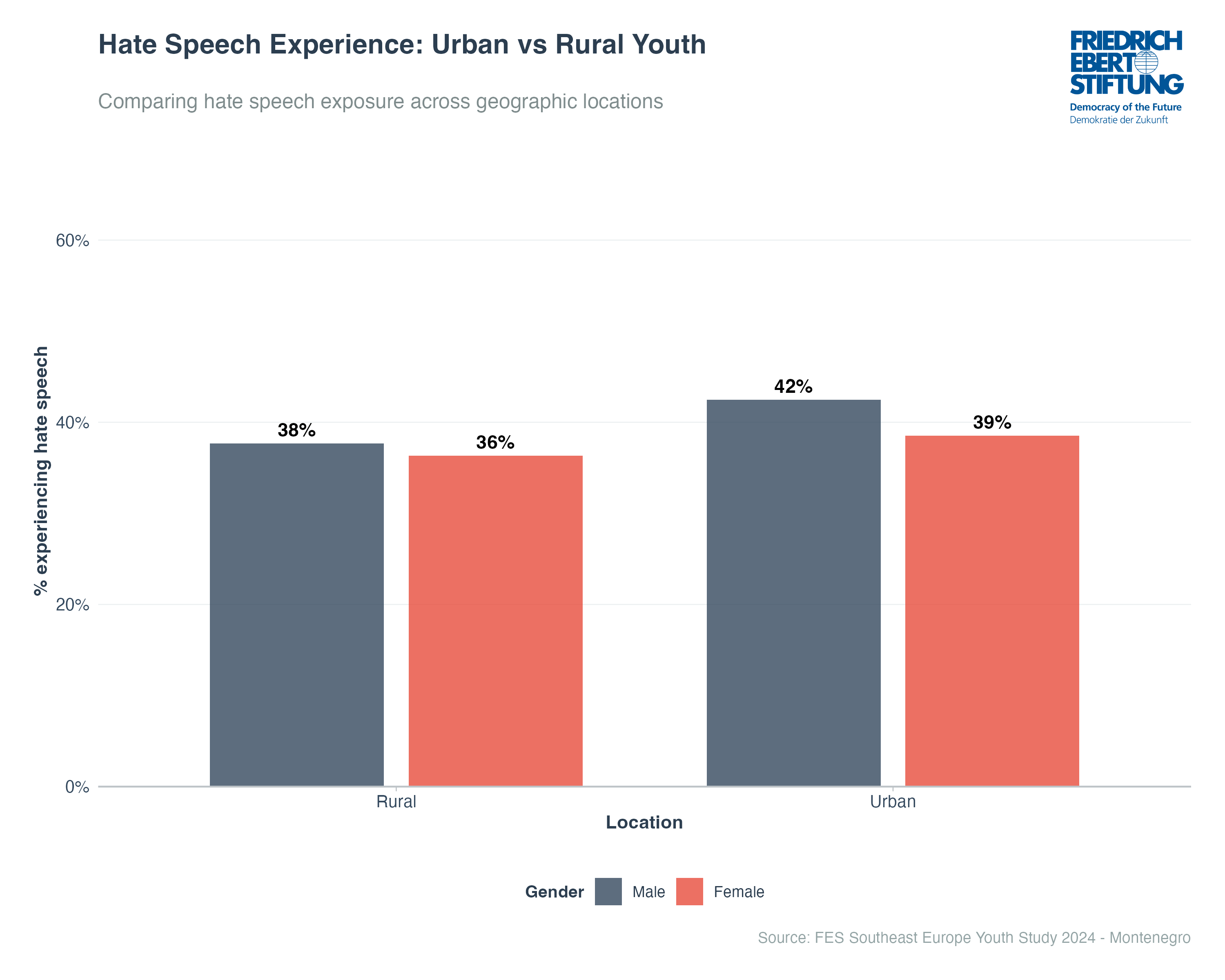
The minimal urban-rural differences suggest that Montenegro's digital spaces create a relatively uniform experience regardless of physical location. A young person in rural Montenegro is about as likely to encounter online hate speech as their peer in Podgorica.
This geographic convergence reflects how digital connectivity has reshaped social experience. Traditional urban-rural divides in exposure to diverse viewpoints or social conflicts may be eroding as online interactions become central to youth social life.
Political Patterns: Complex but Inconclusive
Political orientation shows some interesting patterns with hate speech experience and free speech attitudes, though the relationships are complex and sometimes surprising.
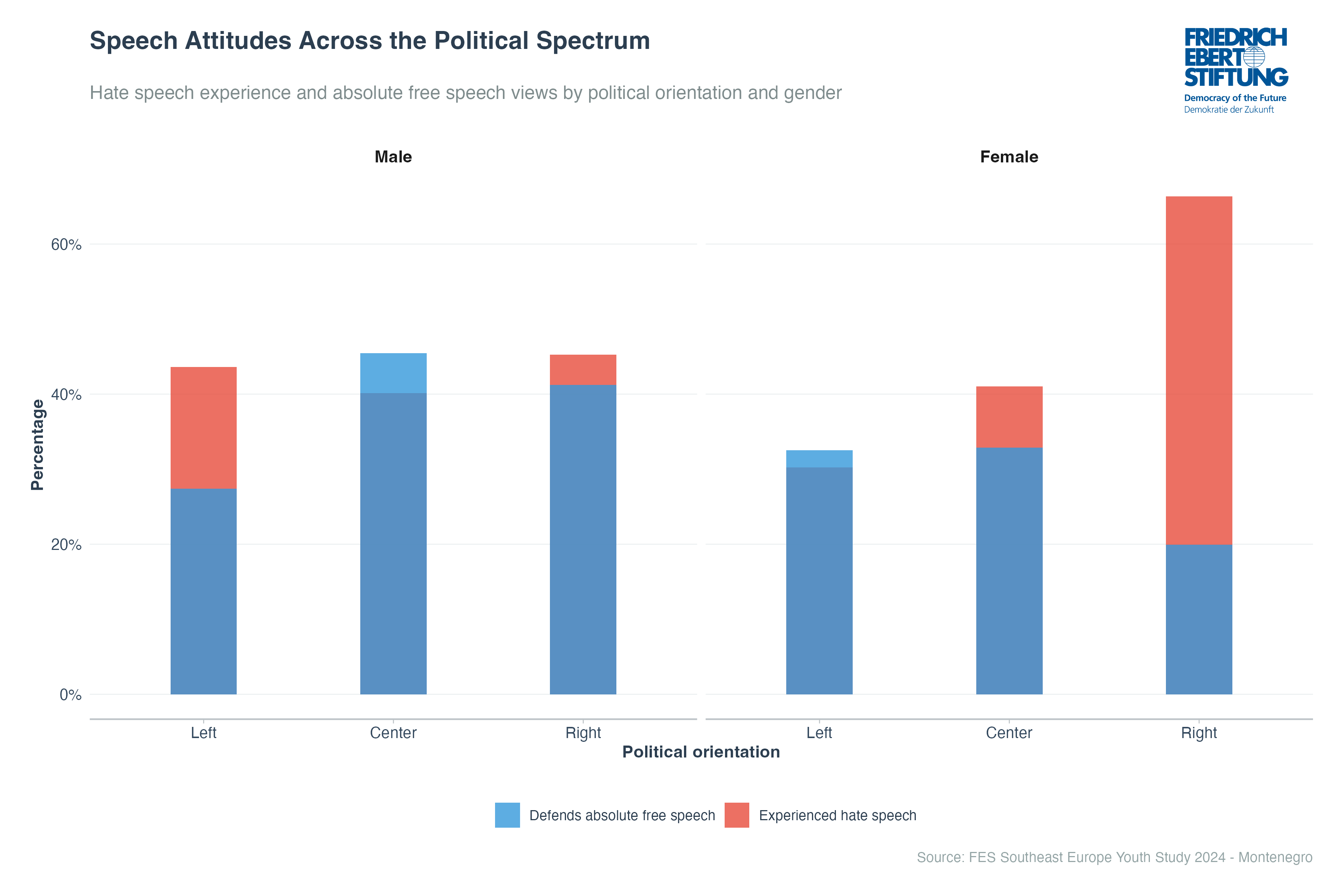
The data hints at intriguing dynamics—right-wing women report particularly high rates of hate speech experience, while defense of absolute free speech varies across the political spectrum. However, these patterns should be interpreted cautiously given the relatively small numbers of youth in some political categories.
A Dashboard of Divergence
Looking at multiple indicators together reveals the full scope of how gender shapes attitudes toward speech and rights in Montenegro.
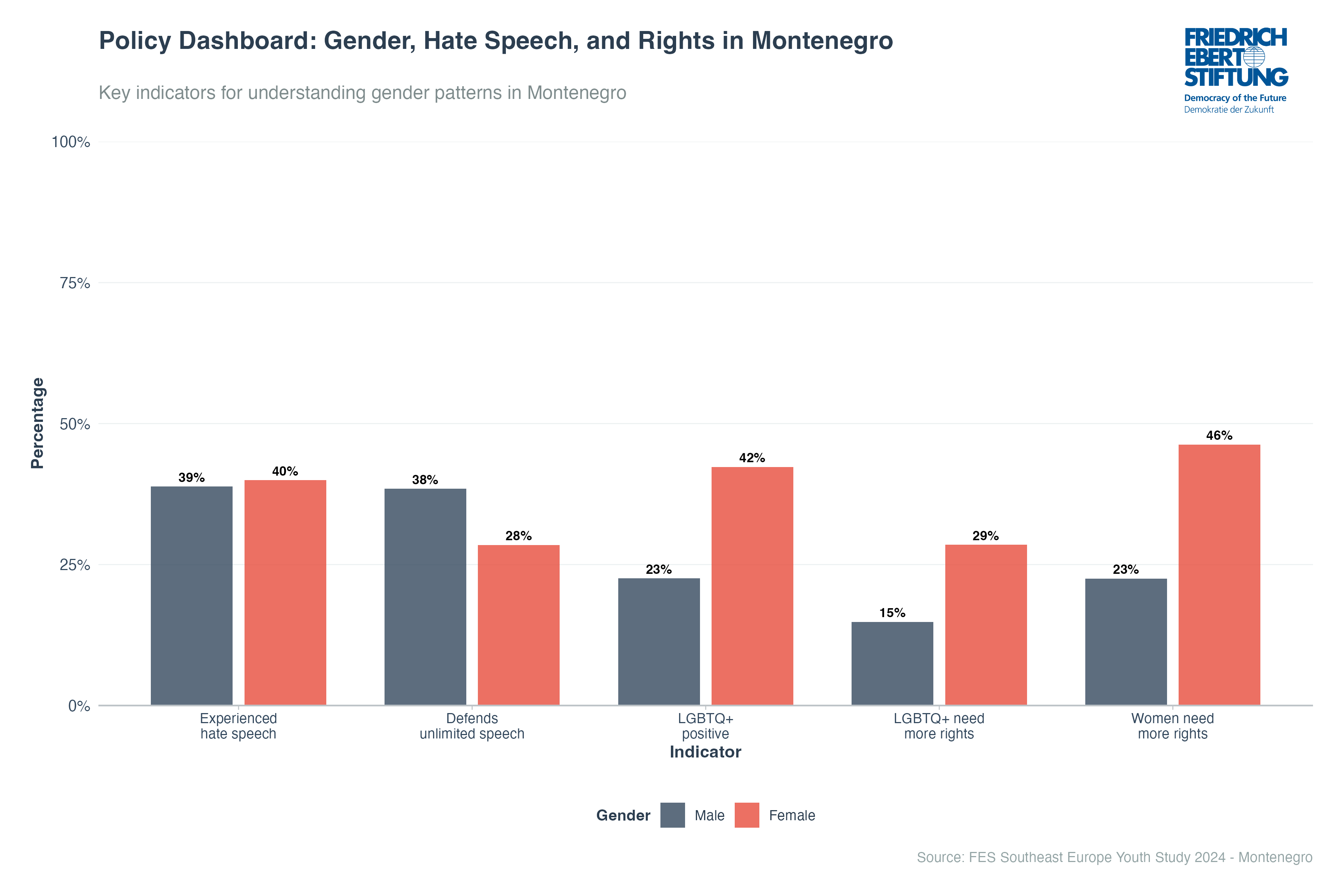
The dashboard crystallizes three key patterns. First, experiential parity: both genders face similar hate speech exposure. Second, philosophical divergence: men more strongly defend absolute free speech. Third, advocacy asymmetry: women show substantially higher support for expanding minority rights across all categories.
These indicators paint a picture of a generation that shares experiences but not interpretations. Young Montenegrin men and women inhabit the same digital spaces, encounter similar challenges, yet draw different conclusions about what those experiences mean for policy and society.
Making Sense of the Paradox
How do we understand a generation where men and women face similar online hostility yet reach opposite conclusions about speech regulation? Several interpretations are possible.
One explanation centers on different threat perceptions. Men and women may experience similar rates of hate speech but interpret its significance differently. What men might dismiss as "just words" or normal online friction, women might perceive as threatening to democratic participation or social cohesion.
Another possibility involves socialization patterns. From early childhood, boys and girls receive different messages about conflict, aggression, and appropriate responses to hostility. Boys might be socialized to view verbal sparring as character-building or inevitable, while girls might be encouraged to seek protection or systemic solutions.
These explanations are not mutually exclusive. Gender likely shapes responses to hate speech through multiple pathways simultaneously, creating the complex patterns observed in Montenegro's data.
Implications for Policy and Practice
Montenegro's findings challenge several common assumptions that often guide hate speech interventions. The absence of gender differences in victimization rates suggests that policies premised on women as primary targets may miss the mark. Both young men and women face substantial exposure to online hostility, indicating need for universal rather than targeted approaches to victim support.
The attitude divergence presents a different challenge. Building social consensus on speech regulation is not simply a matter of raising awareness about harm—Montenegro's youth are already widely exposed to hate speech. Instead, the challenge involves bridging fundamental philosophical differences about the proper balance between freedom and protection.
The age patterns suggest strategic timing for interventions. With hate speech exposure doubling between early and late adolescence, prevention programs targeting 14-16 year olds could prepare youth for the increased hostility they are likely to encounter as they become more publicly engaged.
The lack of urban-rural differences implies that online-focused interventions may be more relevant than geography-specific approaches. Digital literacy and resilience programs could reach youth regardless of physical location, addressing the relatively uniform exposure patterns across Montenegro.
Conclusion: Shared Spaces, Divided Visions
Montenegro's youth reveal an interesting dynamic at the heart of contemporary debates about online discourse. Young men and women face remarkably similar levels of hate speech—around 40% report such experiences. Yet they diverge sharply on what this shared challenge means for policy and society.
The path forward requires recognizing that the gender gap in hate speech isn't about victimization—it's about meaning. Young Montenegrins share digital spaces and similar experiences of online hostility. Where they diverge is in what those experiences signify and what society should do about them. That philosophical divide, more than any difference in exposure, defines Montenegro's gender gap in the digital age.
About the Data
This analysis draws from the Friedrich Ebert Foundation's Southeast Europe Youth Study 2024, examining attitudes among 501 young people aged 14-29 in Montenegro. The survey included unique questions about hate speech experience and free speech attitudes, providing insight into how gender shapes responses to online discourse in Southeast Europe.
Related publication
Hasanović, Jasmin ; Lavrič, Miran ; Adilović, Emina ; Stanojević, Dragan
Youth study Southeast Europe 2024
independent but concerned: the voices of young people in Southeast Europe

